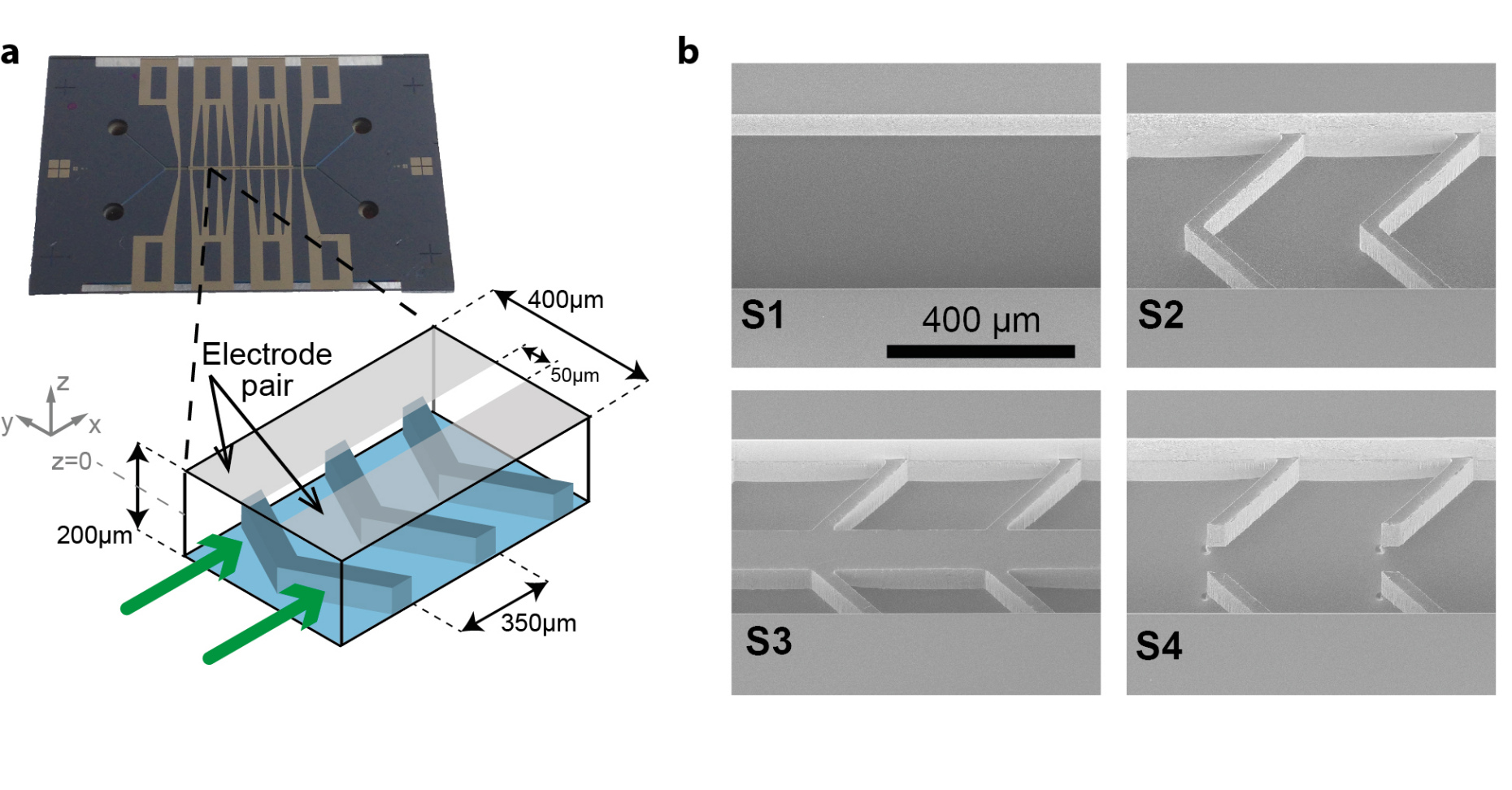Redox flow power delivery and cooling (REPCOOL)
The research of the Laboratory of Thermodynamics in Emerging Technolgies (LTNT) into redox flow electrochemistry for power delivery and cooling proposes a paradigm shift in the way we power and cool computer components: Liquid redox electrolytes transported through microfluidic chips provide both power and cooling via the same fluidic pathways. Based on this concept, the integration density and energy efficiency of computers can be enhanced substantially.
Successful integration of miniaturized redox flow cells with microprocessors requires advances in the fields of redox electrochemistry, heat and mass transport in forced convective flows as well as cell design and packaging. The present research efforts within the REPCOOL project are centered around the fundamental development of these technologies and their demonstration in a chip-scale redox flow battery.
In recent research the Laboratory of Thermodynamics in Emerging Technologies (LTNT) in cooperation with IBM Research Zurich successfully demonstrated the integration of herringbone-inspired microstructures in microfluidic flow cells in order to introduce effective mixing methods, thus removing the diffusion limitation of mass transport in such microfluidic devices [1]. Further LTNT showed that the same design of passive mixers not only enhances mass transport but also heat transfer significantly [2]. Current work aims at transferring the fundamental knowledge gained for membraneless devices to high-power membrane-based devices [3,4].
This research is funded within the interdisciplinary external page REPCOOL project by Swiss National Science Foundation and involves project partners from ETH Zurich, external page IBM Research Zurich, external page Paul Scherrer Institute and the external page Università della Svizzera italiana.
[1] J. Marschewski, S. Jung, P. Ruch, N. Prasad, S. Mazzotti, B. Michel, D. Poulikakos, Mixing with herringbone-inspired microstructures: overcoming the diffusion limit in co-laminar microfluidic devices, Lab Chip. 15 (2015) 1923–1933. doi:10.1039/C5LC00045A.
[2] J. Marschewski, R. Brechbühler, S. Jung, P. Ruch, B. Michel, D. Poulikakos, Significant heat transfer enhancement in microchannels with herringbone-inspired microstructures, Int. J. Heat Mass Transf. 95 (2016) 755–764. doi:10.1016/j.ijheatmasstransfer.2015.12.039.
[3] P. Ruch, N. Ebejer, A. Sridhar, B. Michel, Power delivery and thermal management of electronic packages using redox flow systems, International Flow Battery Forum (Glasgow), 2015.
[4] J. Marschewski, L. Brenner, Neil Ebejer, P. Ruch, B. Michel, D. Poulikakos, Miniaturized interdigitated flow fields for redox flow batteries: Introducing tapered multi-pass architectures, International Flow Battery Forum (Karlsruhe), 2016.
The ESC member involved in this project is Prof. Dimos Poulikakos, head of the Laboratory of Thermodynamics in Emerging Technologies, which performs fundamental research in the areas of interfacial transport phenomena and thermodynamics (the basic discipline of all energy applications involving heat) across scales (nano/meso to macro), including micro- and nanofluidic processes directly relevant to biology and medicine.
